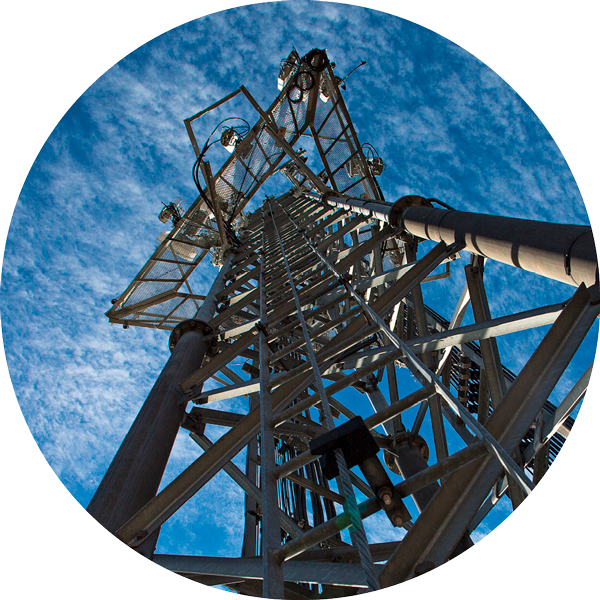Mexico City, April 11, 2018
To the General Shareholders’ Meeting
and Board of Directors
Telesites, S.A.B. de C.V.
Present
In accordance with article 44 section XI of the Mexican Securities Market Act, in correlation with article 172 of the General Business Corporations Law, and in my capacity as Chief Executive Officer of Telesites, S.A.B. de C.V. (the “Company” or “Telesites”), I am pleased to present this report on the Company’s operations during the fiscal year ended December 31, 2017.
Economic overview
The global financial climate was less volatile in 2017 than it had been the year before, although there were some moments of uncertainty such as the renegotiation of the North American Free Trade Agreement, inflation and interest rates in the United States and Mexico.
The U.S. economy grew 2.3% during the year, spurred on by a 6.7% increase in consumer durables that was helped by higher real wages and low unemployment, along with a 3.2% increase in private investment. The Federal Reserve continued its monetary policy normalization, consisting of a 75 basis points hike in the benchmark rate during the year, to end at 1.50%, on expectations that the strength of the domestic economy and the tax reform would drive prices higher.
In Mexico, Gross Domestic Product grew by 2.0%, slightly less than in 2016. The primary and service sectors were able to offset a modest decline in industrial activities, resulting primarily from lower oil production. At the same time, a 3.8% increase in formal employment and a 7.5% rise in remittances in peso terms favored a growth of more than 3% in domestic consumption. Inflation reached 6.8% in the year, driven by higher prices on natural gas and gasoline, as well as food.
The peso gained 5.2% in value against the dollar in 2017, closing at Ps. 19.70, after devaluing as far as Ps. 22.00 at the start of the year.
Mexico’s trade deficit shrank in the year due to a boost from exports to the United States, which rose 8.1% and offset an increase in the oil deficit, which reached US$18.40 billion in 2017. Meanwhile, Banco de México continued its restrictive monetary policy in an effort to control inflation, raising the benchmark rate five times in 2017, from 5.75% to 7.25%.
The country’s manufacturing platform, fundamental to its exports, expected investments in the energy sector in the coming years, and in infrastructure, and expectations of a reasonable outcome in the NAFTA renegotiations, placed the country on stronger footing to face internal and external challenges, although the possibility of political uncertainty might affect the outcome.
One of last year’s main events for the telecommunications industry was the start of deployment of the Red Compartida project, which targets an initial coverage of 30% of the population by March 31, 2018. This will increase the demand for telecommunications infrastructure over the next five years, in which the final goal is to cover 92.2% of the population.
Report on operating and financial results
The following are my comments on the most important figures contained in the financial statements as of the close of 2017, which are attached to this report, including the opinion of the External Auditor.
At the beginning of 2017, Telesites had a portfolio of 14,519 towers generating revenues. Over the course of the year, we added 760 new towers to our portfolio in Mexico and 55 in Costa Rica, bringing the total to 15,334 at the end of the year—an annual growth of 5.61%.
One of the Company’s main goals is to increase the number of co-locations. In 2017 it was able to add 1,255 co-locations, making substantial progress on this front. In Mexico, backed by a reference offer, our Company has Master Lease Agreements with Telcel, Telefónica, AT&T and Altán. In addition to these, the Company also began a commercial relationship with Total Play and Encontrack, which are not mobile telephony operators and thus do not compete for the bands that are useful for cell phone spectrum. This is a sign of our interest in diversifying the client portfolio. Furthermore, in Costa Rica, Telesites began to co-locate both with Telefónica Costa Rica and the Instituto Costarricense de Electricidad (the government agency in charge of telecommunications and electrical energy in that country).
Telesites earned revenues of Ps.5.9 billion in 2017, a year-to-year growth of 8.1%. EBITDA grew by 14.3%, improving our EBITDA margin to 59.5% thanks to the investments of previous periods and the Ps. 1.4 billion invested in 2017 in construction of towers in both Mexico and Costa Rica.
| 2017 Financial and operating highlights | |
|---|---|
| Portfolio at the close of 2016 | 14,519 |
| New sites built | 815 |
| Total portfolio 2017 | 15,334 |
| Tenancy Ratio | 1.126 |
| Total revenues (Ps. million) |
5,855.3 |
| Tower rent revenues (Ps. million) |
3,812.3 |
| EBITDA (Ps. million) | 3,485.3 |
| EBITDA margin | 59.5% |
We are looking ahead to a good year in 2018, when we intend to continue improving our margins through co-locations on both regions where we operate, and by building new towers.
Our Company continues to concentrate on creating value by: (i) increasing client co-location; (ii) organic growth in the regions where we operate; (iii) seeking out new growth opportunities; (iv) ensuring efficient resource management; (v) forging closer ties with our clients, suppliers and employees; (vi) incorporating new platforms to improve service to our tenants; (vii) continuously improving our planning, construction and maintenance processes.
Sincerely
Gerardo Kuri Kaufmann
Chief Executive Officer
Telesites, S.A.B. de C.V.

5.61% growth in the portfolio of new towers integrated to revenues (760 new towers in Mexico and 55 in Costa Rica)

EBITDA grew 14.3% in the year, and the margin was 59.5%